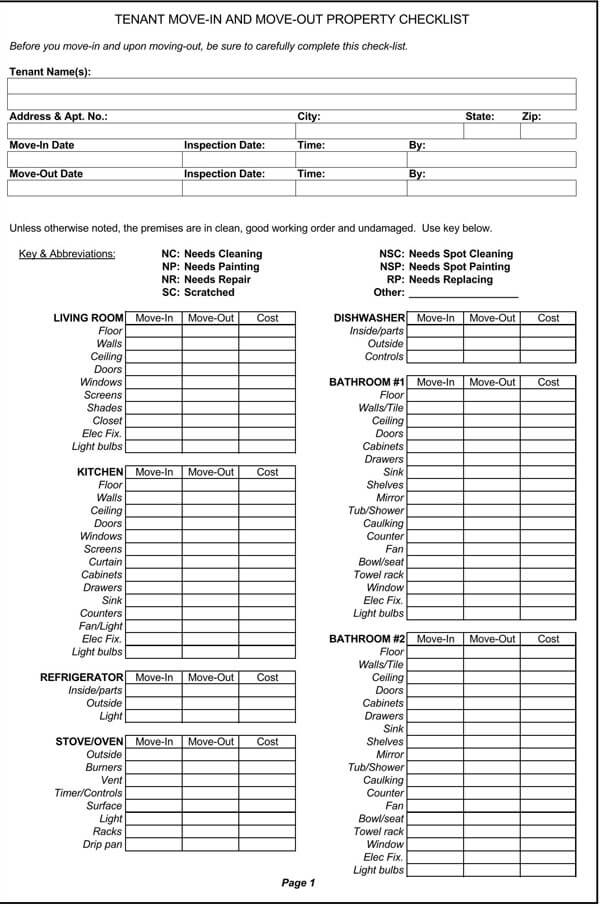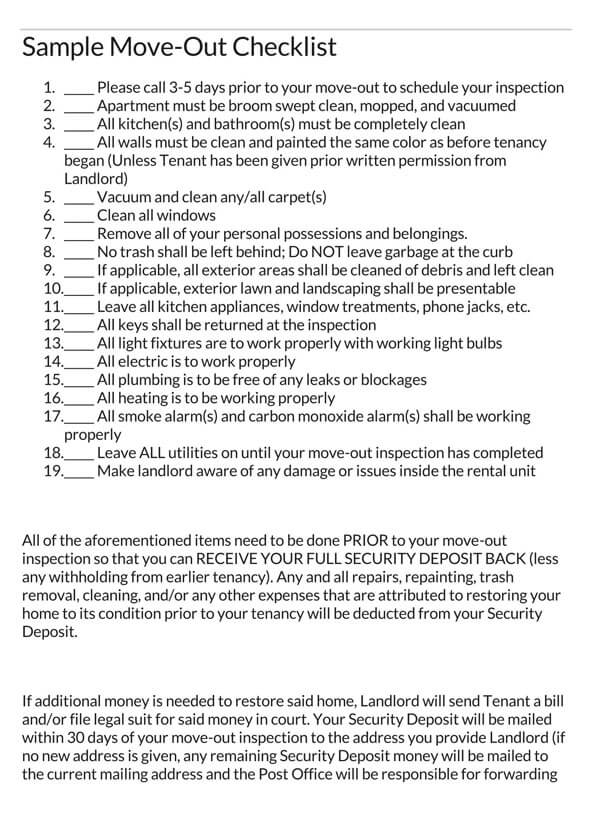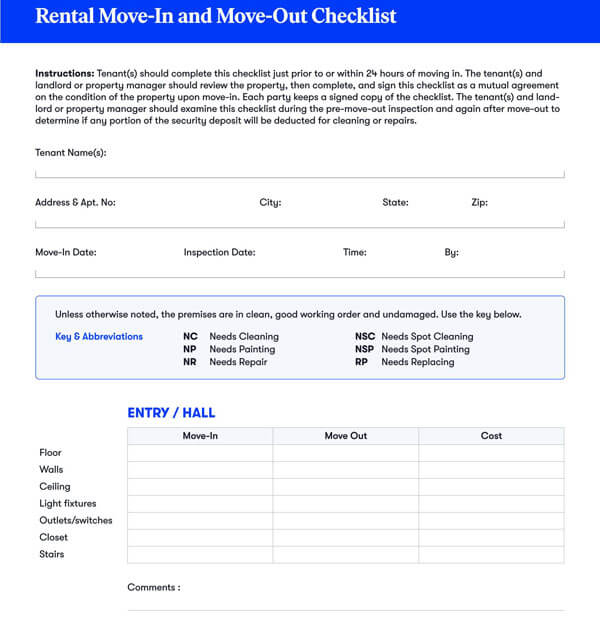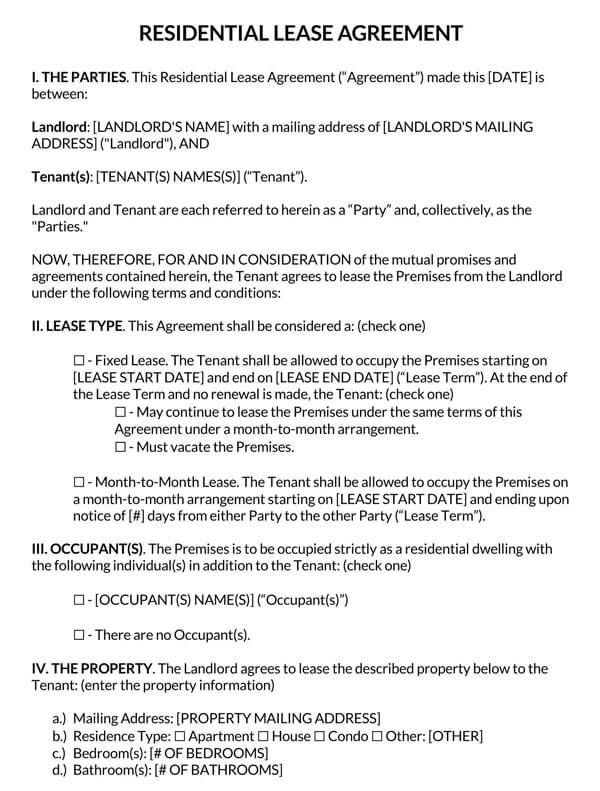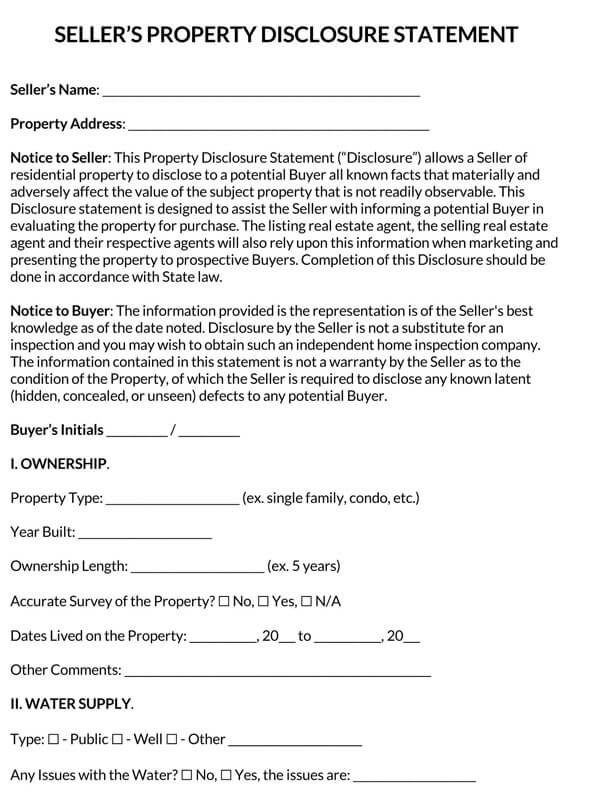Are you planning on renting out your property to a new tenant? It is highly recommended that you provide your tenants with a move-in move-out checklist before handing them the house keys. This document is very important; it is used before a tenant moves in and when a tenant moves out. When moving out, the document is used to evaluate the house’s state— if there are any damages, whether preexisting or new ones. The damage caused by the tenant is their responsibility, and they should finance the repairs. This article discusses the importance of a move-in move-out checklist and its applications, a sample and templates are also included.
What is a Move-In/Move-Out Checklist?
A move-in move-out checklist allows the landlord and tenant to sign off on any damage at the start and end of the stay. Before moving in, both parties should assess the walls, appliances and any other section, confirming their state. At the end of the stay, both parties should examine those areas and see if there is any damage. If the landlord finds any damage to the property, the repairs should be financed by the tenant.
Importance:
The importance of a move-in move-out checklist is overwhelming. They protect both the tenant and the landlord in the following ways: first, they inform the landlord in case of any new damages that need repairs, and secondly, they prevent the tenant from incurring the cost of repairs for the damage they didn’t cause.
How Do You Make a Move-In Move-Out Checklist?
Making a move-in move-out checklist can be a challenging process. To create one, start at the top of the list, living spaces for the property’s address, tenant’s full name, and the move-in and move-out date. It is also recommended that you make a note on the results of the first and last inspection. The remarks and name of the person that did the check should also be recorded.
Upon completing the first part, you should start on the actual checklist. This is the most important section of the checklist. Divide the list into a few columns; first, you can list all the rooms inside the property. These can be a dining room, living room, bedroom, kitchen, among others.
Under every room indicated, you can subhead the specific features such as light fixtures, doors, floors, appliances and walls. In the second column, create a space where the inspector will fill in their comments.
In the fourth column, landlords can make short notes on the repair costs. At the bottom, create space where both the landlord and the tenant write their signatures. Several copies of the checklist should be produced, with every tenant receiving a copy.
What Rooms and Features Should Be Included In The Checklist?
The following rooms and features must be included in the move-in/move-out checklist in order for both the parties involved to remain safe from any sort of loss:
Living room: walls, floors, ceilings, lighting, smoke detector, etc.
Dining room: ceilings, floors, walls, lighting, doors and locks.
Kitchen: ceilings, floors, walls, lighting, doors and locks.
Bedroom #1: closets, radiators, smoke detector, lighting, ceilings.
Bedroom #2: Electrical outlets, ceilings, floors, walls, lighting, doors and locks.
Bathrooms: towel racks, radiators, sink and faucet, shower and bathtub, etc.
Tenant Move-in Move-out Checklist Sample
Property Information
Enter the name and address of the property under inspection.
The resident’s name
Apartment number
Unit size
Move-in inspection date
Move-out inspection date
Section two:
List of areas and items that need to be inspected. Fill out this section after assessing the state of the property.
Free Checklist Templates
Creating a move-in move-out checklist can be a very challenging process. It is for that reason that we have created checklist templates that available for download. You can also customize them to your preferences.
Important Things to Consider While Moving In or Out
There are a few things that all the parties involved must keep in consideration while moving in or moving out so that minimal to no loss is done on any side.
Some of these elements to remember are as follows:
- As a tenant, you should let the landlord know immediately something becomes damaged. Landlords don’t like unwelcome surprises. This is why you should be open and honest when something gets damaged under your watch.
- A tenant should take before and after photos of the property and document them. These photos serve as proof when determining whether damage has been done.
- As a tenant, you should consult with your landlord before making any changes to the property. Changes can be wallpapering, painting or renovating.
- It is important to check for existing pest and bug problems. Both the tenant and landlord should ensure that they examine the property for any damages.
What Happens if a Landlord Finds New Damage to their Property?
Incase damage to the property happens while the tenant is still staying in the property; they will be responsible for covering the cost of the repair. When the stay comes to an end, the landlord inspects the property for any damages, and if any, he provides the tenant with a list of damages. The total amount is deducted from their initial security deposit. If there isn’t proof of damage from the checklist, the tenant can dispute the deductions. This means that landlords should provide evidence for any damages; they should prove that the tenant caused the damage.
FAQs
A tenant move-in move-out checklist is very important. It is a document that can help both the landlord and the tenant. Use our templates to create an effective and detailed move-in move-out checklist.
